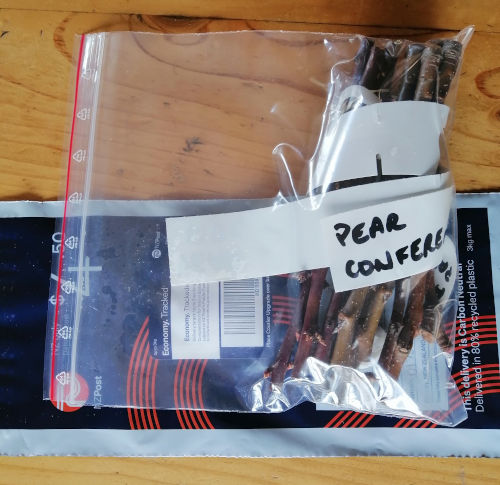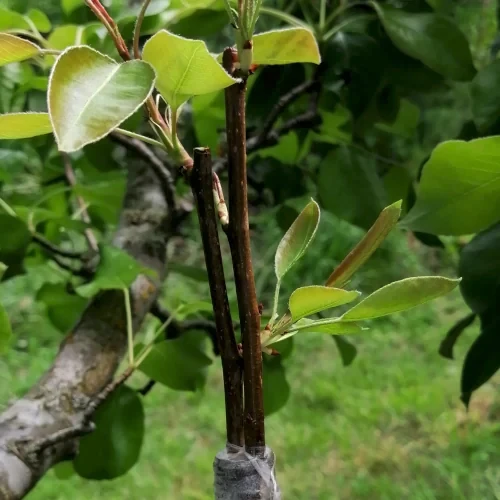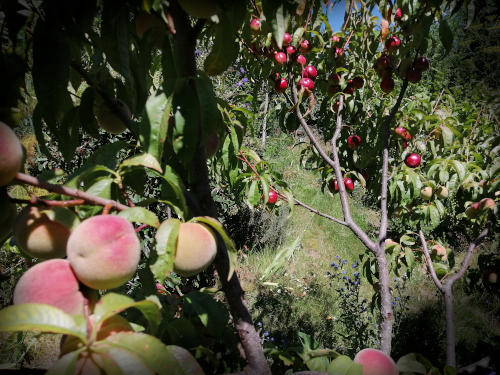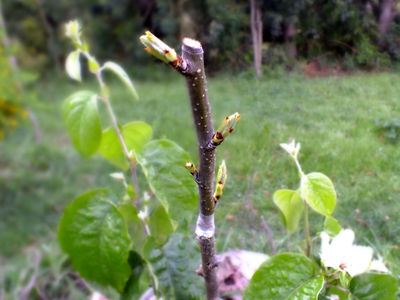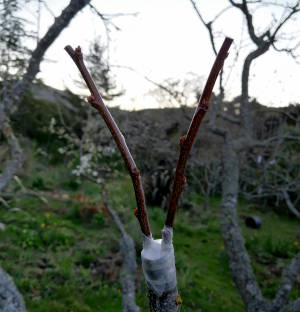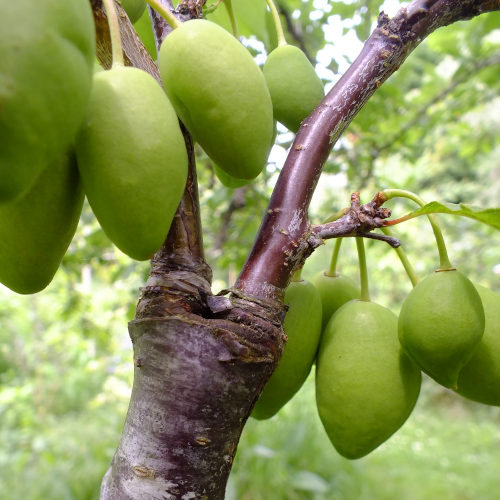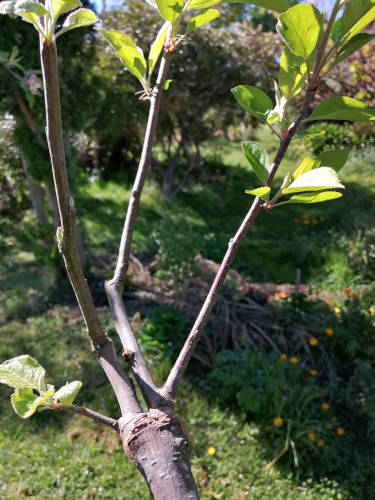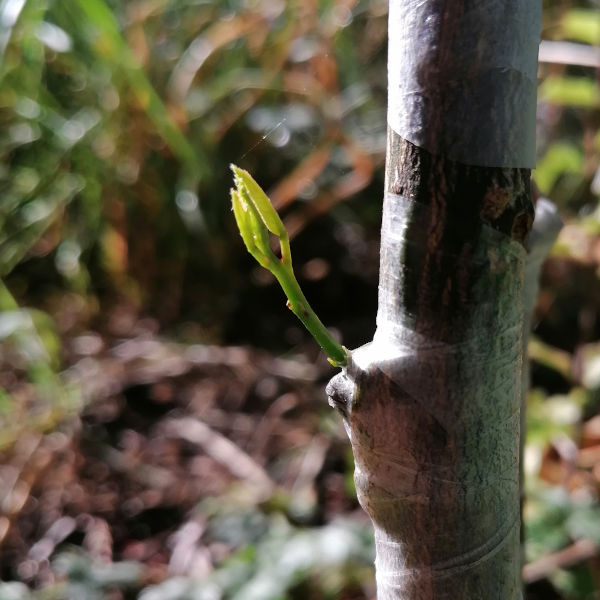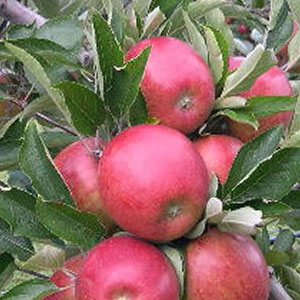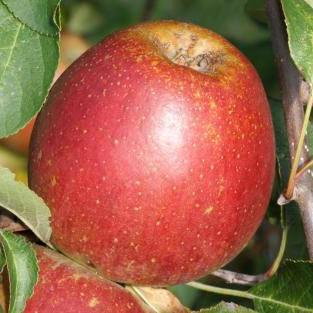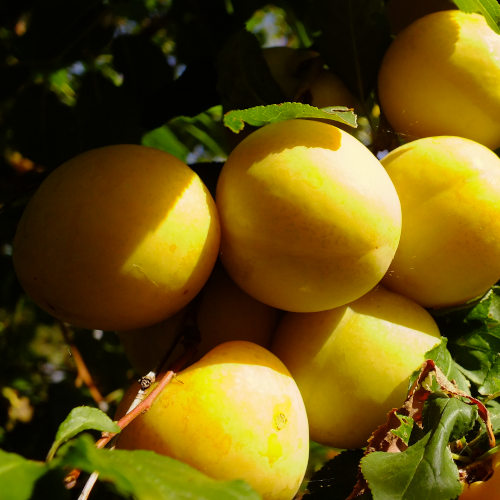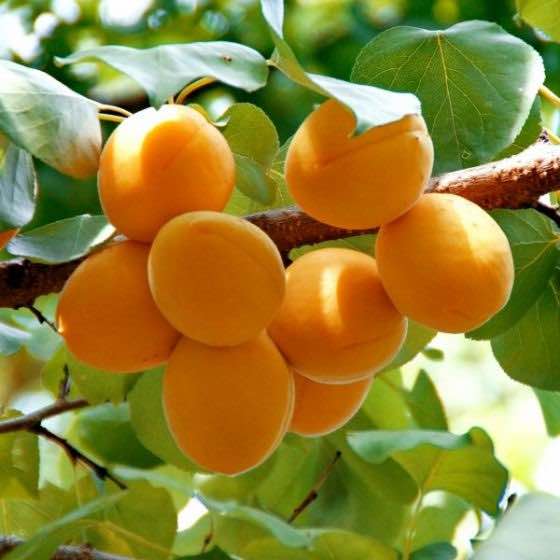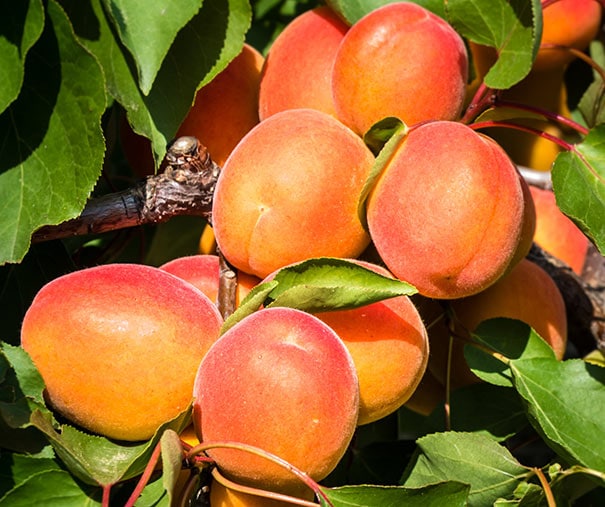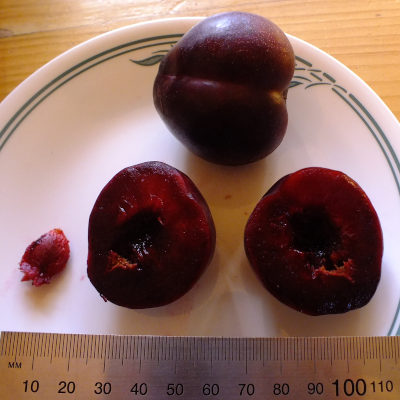Apricot - Jumbo scion / bud wood has been added to your order
Minimum order amount is $9.00
You must spend another $5.10 before you can place this order
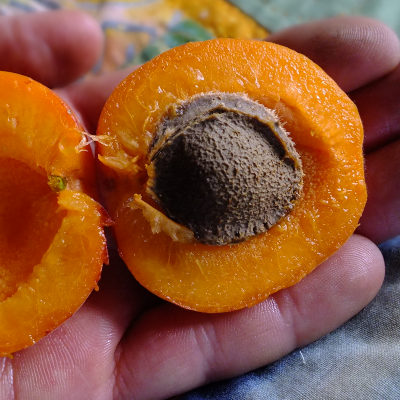
Apricot - Jumbo scion / bud wood
View / Edit Order
($3.90 / 1 item)
Collecting, storing and posting scion wood
Collection
Scion wood is collected during the dormant season from shoots that grew the previous year. In North Canterbury that is June - July. Vigorous growth of at least a 30 centimetres make the best scions. Water sprouts from up in the tree usually make good straight scions. Do not collect scion wood while it is frozen, and avoid wood that has been damaged by cold.
Storage
After cutting, scions should be tied in bundles, labelled, and stored under moist conditions in a temperature range of 4 to 7c. Bundles wrapped with damp paper towelling, sealed in plastic bags, and placed in a refrigerator store well providing it does not contain apples, pears, or other ethylene gas-generating fruit, as this is reputed to ruin the scion wood. However, wood sealed in plastic bags may not be affected?
Grafting time
Choosing when to graft can be tricky. What you want to be doing is performing the graft when the host tree or rootstock is waking up in the spring and the sap is rising and buds starting to swell, prior to blossom or leaf burst. Generally the grafting proceeds in the same order the trees flower and fruit, but earlier. Starting in mid to late august with almond followed by cherry, plum, peach & nectarine, nashi, pear and finally apple in late September.
At grafting time, cut off and discard the tip and base of the scion. Buds near the tip are often flower buds, and those near the base are often weak buds. The remaining portion of the stem is used to make scions each containing three to five buds.
Direct or Green Grafting
Scions of apple and pear (possibly others?) can be collected and grafted immediately in early spring. Mid August to mid October in North Canterbury
Postage
When we send scions they are bundled and labelled, sealed in a resealable bag with a wad of damp paper.
There are 2 main activities related to grafting that are season and weather specific.
- Collecting desired varieties of scion wood from healthy trees while they are dormant. For deciduous fruit and nut trees this is mid winter or late June to July in New Zealand
- Grafting the stored scions onto the appropriate rootstocks in early to mid spring when growth is commencing. Here in North Canterbury this is from early August to to mid October.
Correct timing is only part of the grafting process. Make sure you familiarise yourself with the technique, compatibility and after care for the best results.
Imagine a single tree with apples of many flavours, ripening from March to June, or combining apricots, plums and peaches.
A great way to save space and spread the yield over a longer harvest time.
While there is no limit to the number of different cultivars that can be supported from a single root system there are several considerations or complications that arise:
- Differing growth rates can result in one type becoming overly dominant
- Each additional variety increases the complexity of pruning
If you'd like extra flavours added to your existing fruit trees you can teach yourself to graft or talk to us and we may be able to help.
Botanical name
Cydonia oblonga
Details
Quinces are used as a root stock for producing dwarf pears, loquat and other quinces.
Root stocks can be created from root suckers, stool bed or seeds from overripe fruit planted in late autumn.
Flowers
White
Forest layer
low-tree
Fruit / berries
Propagation method
Cutting
Benefits
- The primary benefits are smaller trees that fruit sooner
Negatives
- Many cultivars of pear are not directly compatible with quince and require double grafting with a compatible interstock
- Pears grafted on quince have shorter lifespan than on seedling grown root stocks
- Quince trees are prone to suckering, sending up growth from around the base of the tree and near damaged roots. These can be used as rootstocks.
Scions of desirable species must be grafted onto a suitable, compatible root system or ultimately the graft with be rejected by the host tree.
The roots determine to size, growth rate and suitable soil conditions for the tree while the scion controls the flowers and fruit type and timing.
Most are only self compatible and so apple must be grafted to apple but as usual there are exceptions such as almonds onto peach.
Wood is cut and graded in June for dispatch in July – August. On receipt, scion wood will need to be stored refrigerated until the appropriate local grafting time.
Length: 150 – 170mm with 3 - 4 buds
Diameter: 5 – 12mm
Grafting is the process of adding part of a known, desirable tree onto existing, growing roots of a similar species. This process offers many benefits such as having many types of apple on a single tree or influencing the characteristics of the tree such as size, soil requirements and disease resistance.
May
June
July
August
September
October
Done during summer, budding can be used to add wood from a desirable tree onto a different root stock much like grafting.
Length: 150 – 170mm with 3 - 4 buds
Diameter: 5 – 12mm
Orders will be cut and dispatched for prompt budding.
January
February
March
People often purchase these items too
Your session will expire soon
Your session has been idle for some time and will expire shortly if no action is taken.
Hide this message

